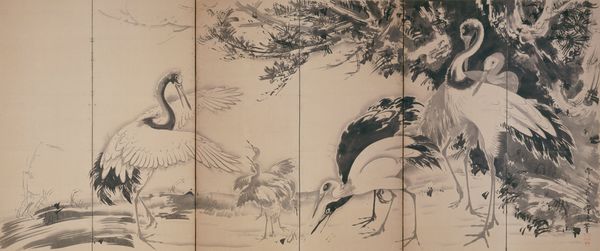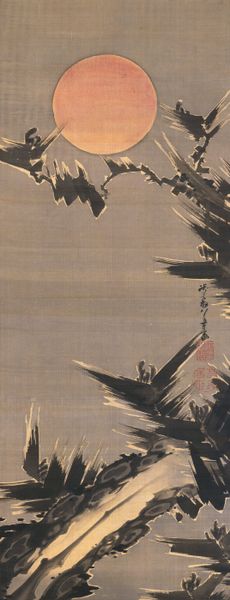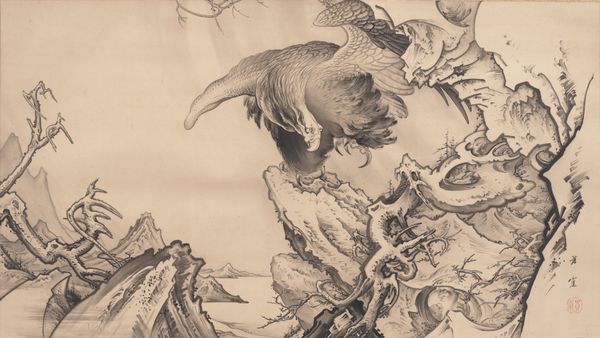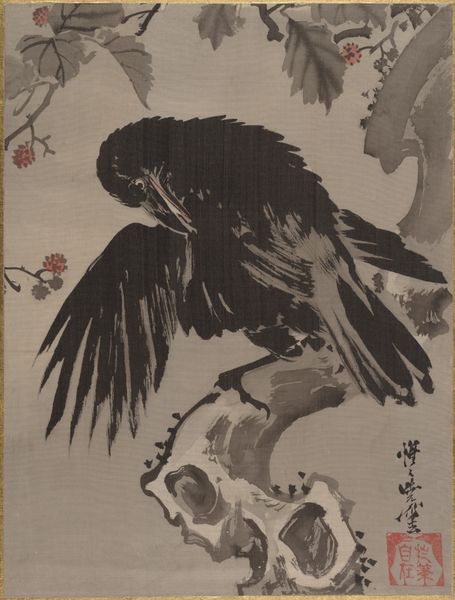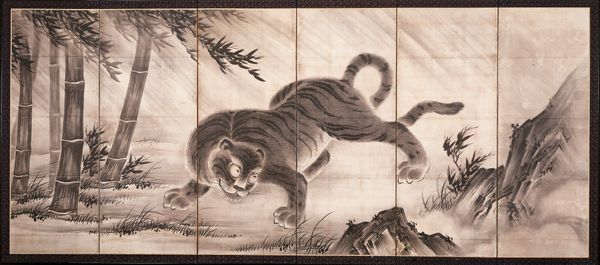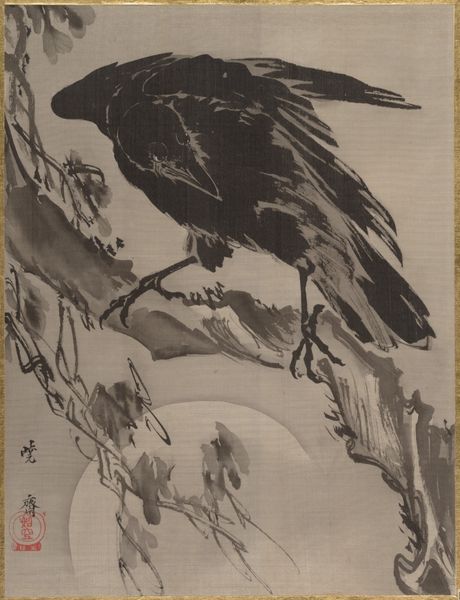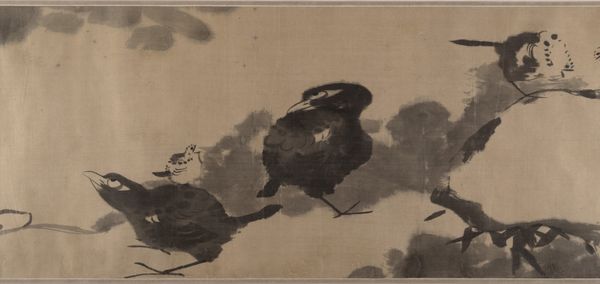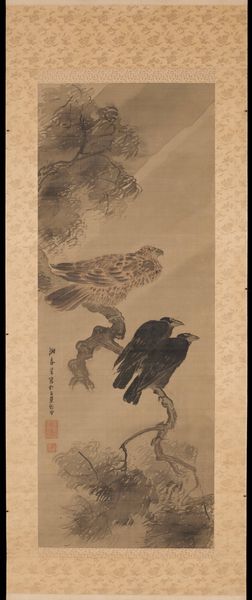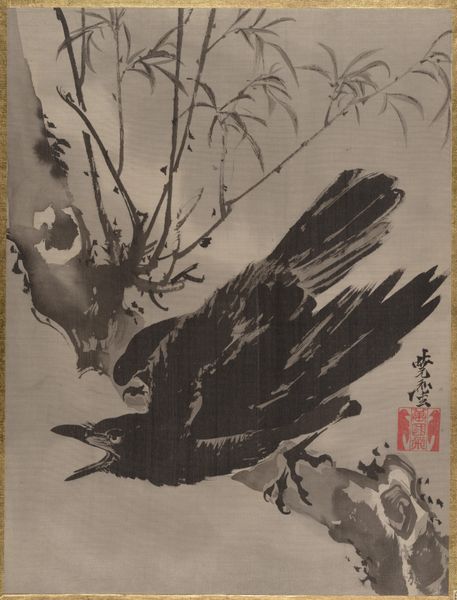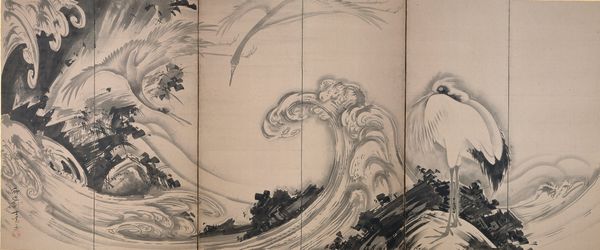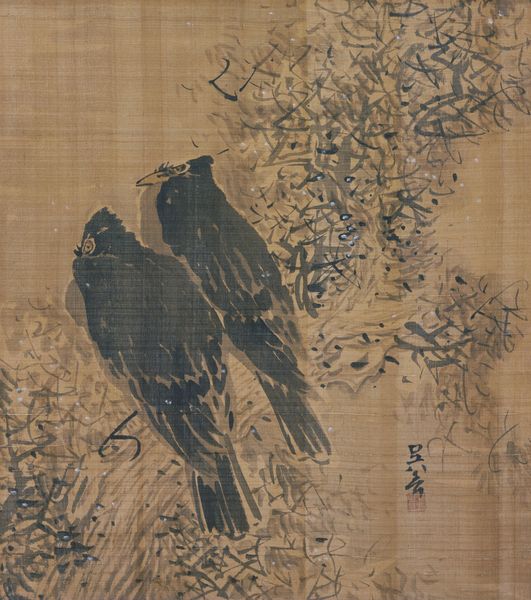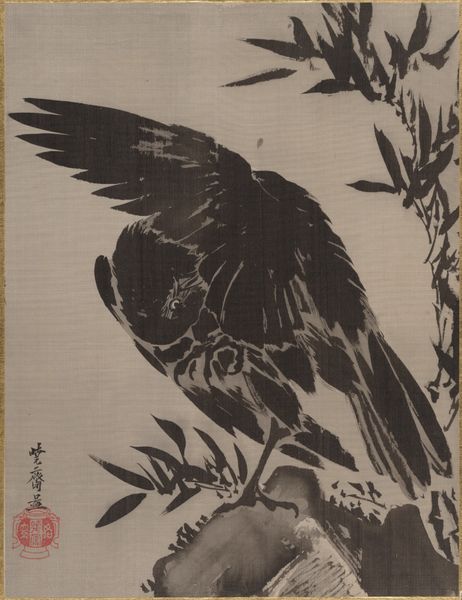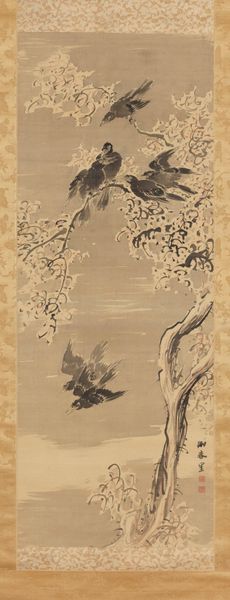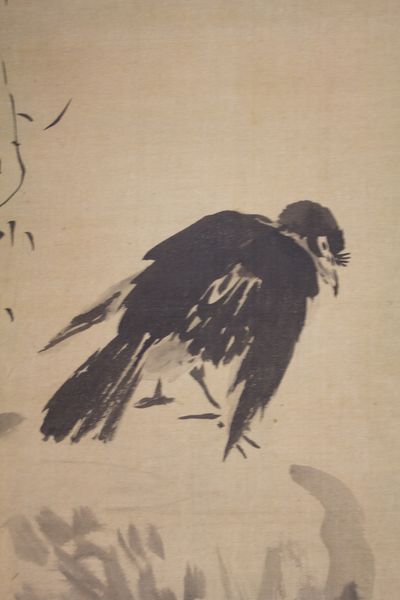
drawing, paper, ink-on-paper, ink
#
drawing
#
ink painting
#
animal
#
asian-art
#
landscape
#
japan
#
paper
#
ink-on-paper
#
ink
#
underpainting
#
line
Dimensions: 53 11/16 × 109 7/16 in. (136.37 × 277.97 cm) (image)
Copyright: Public Domain
Mochizuki Gyokusen made this dramatic painting of an eagle in Japan sometime before 1913, using ink on paper. The monochrome palette might suggest a quick sketch, but don't be fooled. Sumi ink painting is a highly refined discipline. The artist controls not just the image but the ink itself, grinding a solid block with water to achieve the perfect consistency. Each brushstroke is definitive, exploiting the way the ink blooms and bleeds into the absorbent paper. The formidable eagle, perched above crashing waves, required painstaking control and an intuitive understanding of the materials. The format, a folding screen, adds another layer. Such screens were functional objects, providing flexible division within domestic spaces. Gyokusen was celebrated in his day for combining this traditional craft with the ideals of fine art. So next time you see what looks like a simple drawing, consider the deep history of skill and labor embedded in its creation.
Comments
minneapolisinstituteofart almost 2 years ago
⋮
Birds of prey have been painted to convey various political and social messages since the Tang dynasty (618–907). A solitary eagle grasping a crag surrounded by a turbulent sea is said to have been first painted by Lü Ji 呂紀 (b. 1477). The subject was known in China as qingchao duli 清朝独立, meaning ‘standing alone in a clean court’ or ‘standing alone in clean tides.’ Qingchao duli was intended to encourage courtiers to maintain moral integrity amid a treacherous and corrupt court. It is difficult to ascertain whether the artist of this work intended to impart such a specific message to his audience in Edo-period Japan (1603–1868), where birds of prey generally symbolized the power and authority of the military class. This eagle appears to be a White-tailed Sea Eagle but as Japanese artists did not paint after nature, it cannot be confirmed. The eagle’s lowered head and alert expression suggests that it is bracing itself for some kind of onslaught. Vigorous, heavily inked brushwork impart a sense of brooding power.Mochizuki Gyokusen was a third generation artist of the Gyokusen lineage of painters. A pupil of Ganku, he later studied the Kyoto-based Shijō school of naturalistic painting which combined Japanese and Western pictorial conventions. The bold, expressionistic brushwork of this painting is a departure from the studied elegance that usually characterizes his paintings.
Join the conversation
Join millions of artists and users on Artera today and experience the ultimate creative platform.
